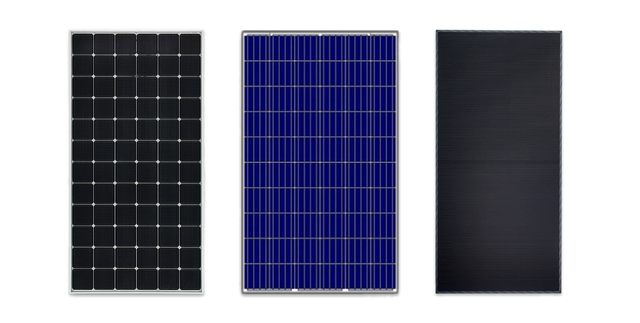The 6-Minute Rule for Solar Systems
Wiki Article
Some Of Solar Systems
Table of ContentsThe Ultimate Guide To Solar SystemsNot known Details About Solar Systems Rumored Buzz on Solar SystemsRumored Buzz on Solar Systems
There are 3 different kinds of solar panels: monocrystalline, polycrystalline, as well as slim movie. Monocrystalline photovoltaic panels are highly effective and also have a streamlined design, however come with a higher price point than other photovoltaic panels. Polycrystalline solar panels are less expensive than monocrystalline panels, nevertheless, they are much less reliable and aren't as visually pleasing.Nowadays, there are several selections of monocrystalline solar panels on the market to choose from., are becoming a significantly prominent monocrystalline option.
Due to the fact that monocrystalline solar batteries are made of a solitary crystal of silicon, electrons have the ability to conveniently move throughout the cell, increasing overall performance. Not just do monocrystalline panels have the greatest effectiveness ratings, they usually also have the highest possible power ability rankings, also. Many monocrystalline panels on the marketplace today will have a power output score of at the very least 320 watts, but can increase to around 375 watts or higher!.
Due to the fact that polycrystalline cells include several silicon cells, the electrons can stagnate as conveniently and consequently, reduce the efficiency of the panel. The reduced effectiveness of polycrystalline panels also indicates they tend to have a lower power outcome than monocrystalline panels, generally varying between 240 watts and also 300 watts.
The smart Trick of Solar Systems That Nobody is Talking About
In order to meet your energy needs, you would need to set up even more thin film panels over a large area to produce the same quantity of electrical energy as crystalline silicon solar panels. This is why slim film solar panels don't actually make feeling for property installments where room is limited.The temperature coefficient informs you just how much the power outcome will certainly reduce by for each 1 * C over 25 * C the panel gets. The basic temperature level coefficient for mono as well as polycrystalline panels commonly drops someplace between -0. 3% as well as -0. 5% per * C. Thin film panels on the other hand, are navigate to this website around -0.
With some slim film panels, it's tough to even see the specific cells within the panel. They likewise have a tendency to have much less circuitry as well as busbars, meaning there's much less white room. Because they are so ineffective, you would certainly need to cover your whole roof covering in slim movie panels - which may or may not be your design.

Some makers have actually functioned around this with black packing or shaping the cells differently, but these visual adjustments can influence both the cost as well as performance of the panels. In general, monocrystalline panels still look smooth, however they're a bit more obvious than slim movie panels. solar systems. The procedure in which polycrystalline solar cells are manufactured creates the cells to have a blue, marbled appearance.
Solar Systems Can Be Fun For Anyone
If you get on a tight spending plan, polycrystalline panels might make more sense for you. We do not suggest thin film solar panels for residential setups - their performance and also sturdiness don't make the affordable worth it, and it's unlikely you'll have virtually sufficient room to set up the number of slim movie panels you would certainly need to cover your family electrical energy usage.Considering that they are made from pure silicon, they can be conveniently identified by their dark black color. Making use of pure silicon likewise makes monocrystalline panels one of the most space-efficient and longest-lasting amongst all 3 photovoltaic panel types. Nonetheless, this comes with a cost a great deal of silicon is lost to produce one monocrystalline cell, often pop over to this web-site getting to over 50%.

Amorphous silicon panels (A-Si) derive their name from their unformed nature. Unlike mono-and polycrystalline solar cells, the silicon is not structured on the molecular level. Usually, an a-Si cell calls for only a fraction of the silicon needed to create typical silicon cells. This permits them to have the lowest production expense, at the expense of efficiency.
The Of Solar Systems
50 $0. 50 $0. 50 Note that these figures do not consist of the expense of installment as well as labor.
This means that thin-film panels can be a great alternative for hotter atmospheres or places that experience more sunlight throughout the year. The updated International Structure Code of 2012 needs photovoltaic panels to match the fire rating of the roofing system where they are set up. This is to make certain that the components do not speed up the spread of fires in the occasion of a fire.
Report this wiki page